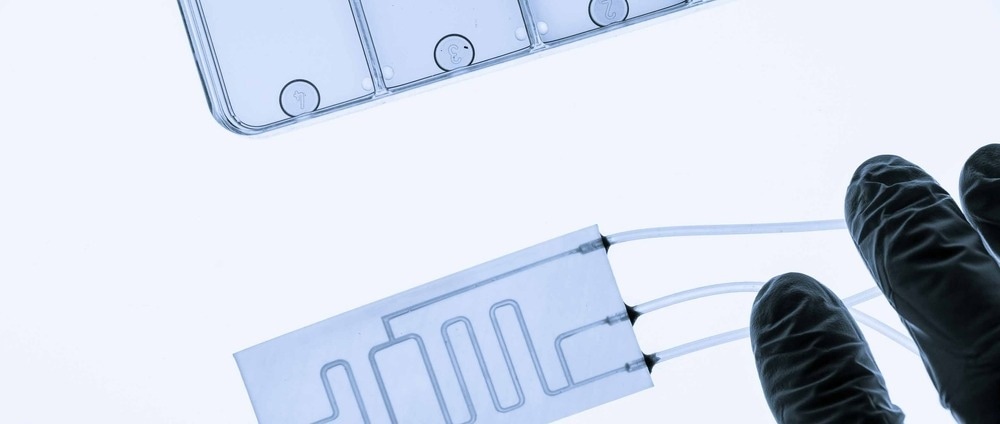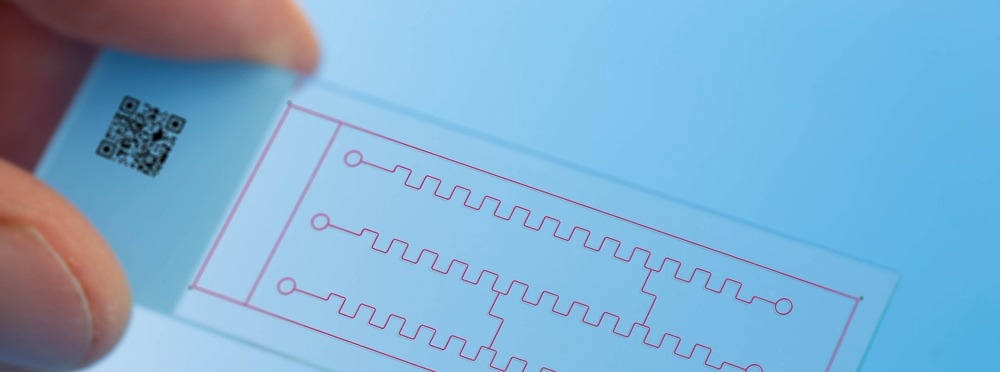One of the primary goals of research has been to integrate many laboratory procedures into a framework that can be placed on a chip, known as Lab-on-a-Chip (LOC).

Image Credit: luchschenF/Shutterstock.com
Graphene has emerged as one of the most remarkable materials since its first isolation in 2004, with the ability to profoundly disrupt and positively influence a vast array of industries, including the LOC industry. This article intends to shed light on graphene's potential as a commercially viable solution for LOC devices.
Paradigm Shift in Conventional Diagnostic Practices
In 2021 alone, the WHO estimates that 1.5 million individuals became infected with HIV.
Worldwide, over 40 million people are HIV-positive. Unfortunately, because of the high cost of the HIV testing procedure, 90% of these individuals have not been able to monitor their progression of infection. In addition, the HIV testing procedure requires a fully equipped laboratory and qualified technician, making it unavailable in most remote areas and undeveloped countries.
Efforts are being made to shrink the whole testing procedure down to a single piece of a chip at the cost of less than a dollar. Here, a minute amount of bodily fluid or blood sample could provide instant results and diagnosis of chronic diseases.
With LOC technology, the medical industry is one step closer to making this a reality.
LOC is based on the core technology of microfluidics. Microfluidic technologies utilized in lab-on-a-chip devices enable the fabrication of millions of microchannels, each measuring only a few micrometers, on a single chip. Microchannels allow for the processing of fluids in quantities as small as a few picolitres, resulting in lower sample volumes necessary for diagnostics.
Graphene: The Future of Lab-on-a-Chip Devices
Photolithography is the foundation of the majority of lab-on-a-chip fabrication technologies. Silicon is used as the primary material for LOCs among semiconductors. However, to reduce the high production costs of Si and meet the needs for bio- or chemical compatibility, materials such as paper, glass, polymer, and hydrogel are frequently used to fabricate lab-on-a-chip devices.
Among these materials, graphene stands out for its inclusion in LOCs. This is due to its high surface area, which aids surface functionalization of the desired bio-receptor to achieve single-molecule detection; excellent electrical conductivity, which is beneficial for sensitive electrical readouts, and outstanding mechanical strength, which makes graphene an essential material for the fabrication of LOC devices.
The transistor is an integral component of a lab-on-a-chip device. A graphene-based field effect transistor (GFET) is fabricated by a photolithography technique. In this technique, CVD-grown graphene is patterned into FET channels between two metal electrodes – the source and drain. The surface of the GFET channel is functionalized by bio-receptor or linker molecules. When target molecules such as viruses are attached to the linker molecules on the graphene surface, this alters the conductivity, and a change in the electrical conductance of GFET occurs.
Graphene-Based LOC Devices at the Commercial Forefront:
Cardea Bio-Integrating Biology With Electronics
The paradigm shifts in the commercialization of graphene-based LOC devices came when Cardea, the US-based startup, announced the development of the Biosignal Processing Unit (BPU™) -a type of microchip that uses GFET as the active sensing surface which provides next-generation liquid biopsy for cancer detection.
Traditional biopsies are tissue biopsies; however, they are pretty intrusive and rarely provide any early warning detection. Cardea utilized the GFET platform to detect multiple cancers in a single fluidic sample.
It is based on the notion that when a biomolecule binds to GFET, it alters the graphene's electrical characteristics and provides a detectable signal that can be converted into a readable output. It is feasible to detect RNA, DNA, and protein-based biomolecules on a single platform by placing various capture molecules on top of the GFET layer. Because of this, the method can be utilized for cancer diagnosis and disease detection.
The BPU™ was initially designed to detect whether a patient had cancer. Still, this year, Cardea and Siemens Healthineers Center for Innovation in Diagnostics announced a joint venture to use the BPU™ to detect multiple disease biomarkers, including SARS-CoV-2.

Image Credit: luchschenF/Shutterstock.com
Integrated Graphene: From Concept to Commercialization
Integrated Graphene, the Scottish company, developed a 3D-graphene foam electrode known as the Gii-Sens for biosensing. The Gii-Sens technology can be easily integrated into existing products for a range of fluidic volumes from microliters to milliliters to improve device performance.
Ever since its first commercial appearance, the Gii-Sens has been integrated into a range of sensing platforms for different health-monitoring applications, including the detection of glucose levels in diabetic patients’ blood and SARS-CoV-2.
Recently, Integrated Graphene has joined the SensiBile team to help detect the quality of a donor's liver to predict the probability of developing post-liver transplantation complications in a recipient patient.
Grapheal: Point-of-Care Devices for Global Health
Grapheal, a CNRS-Grenoble (France) spin-off company established in 2019, is another startup that has developed some noteworthy breakthroughs in lab-on-a-chip technology. Some of their most recent work has centered on the COVID-19 diagnostic test.
TestNPaa is Grapheal's diagnostic test for quickly screening for COVID-19 infection. The biosensor is constituted of functionalized graphene and detects a specific electrical signal when the SARS-CoV-2 virus interacts with antibodies residing on a graphene layer in TestNPass. Within 5 minutes, the digital test detects the existence of the virus and alerts users via Grapheal's free smartphone app.
WoundLAB is yet another unique product that has become popular in 2022. With the ability to record continuously, this flexible, transparent graphene-based biosensor patch measures wound progression in real-time. The data is subsequently communicated to a medical cloud via a smartphone app for data aggregation and further analysis. Physicians are then able to remotely monitor wound healing in their patients and receive warnings if any infections or medical issues occur.
The Future of Graphene-Based Lab-On-A-Chip
Graphene-based lab-on-a-chip devices, without a doubt, offer the advantages of high sensitivity due to graphene's high conductivity, little sample volume consumption, instant detection, and user-friendliness. Reproducibility is critical in any LOC device, those containing graphene. However, with the recent steep cutback in the manufacturing cost of high-quality graphene, graphene-based LOCs could soon pave a new way for cost-effective, scalable, and reproducible point-of-care devices to improve global health, particularly in countries with limited healthcare resources.
References and Further Reading
Sengupta, Joydip et al. (2021). Graphene-based analytical lab-on-chip devices for detection of viruses: A review. Carbon Trends. Available at https://www.sciencedirect.com/science/article/pii/S2667056921000493
Grapheal. (2022) TestNPass digital covid test. Available at https://www.grapheal.com/testnpass
Cardea Bio (2022) What is BPU and how it will change the world. Available at https://www.cardeabio.com/our-vision
Integrated graphene (2022) Lab on a Chip services. Available at https://www.integratedgraphene.com/loc-technologies
WHO (2022) HIV [Online] Available at: https://www.who.int/news-room/fact-sheets/detail/hiv-aids
Disclaimer: The views expressed here are those of the author expressed in their private capacity and do not necessarily represent the views of AZoM.com Limited T/A AZoNetwork the owner and operator of this website. This disclaimer forms part of the Terms and conditions of use of this website.